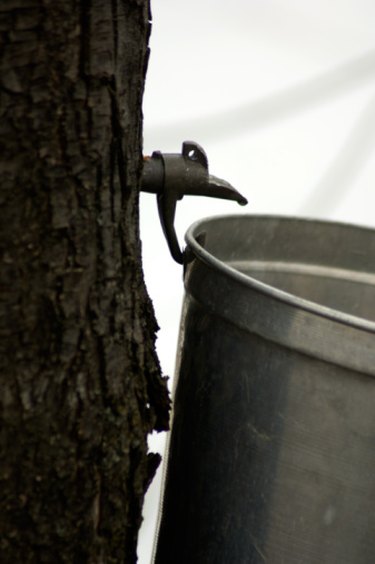
Over 100 different species of maple trees grow throughout the world. Out of all these varieties, the sugar maple is often considered to produce the best sap for syrup. Upon first glance, many maple trees look nearly identical to one another, but they all have distinguishable characteristics. If you're unsure whether your maple is of the sugar maple variety, you can usually tell just by the leaves, but other parts of the tree help identify it as well.
Step 1
Examine the location of the tree. Sugar maples tend to grow in shaded areas so they can hide in the shade of other trees during their younger years.
Video of the Day
Step 2
Analyze the shape of the tree. The branches of a sugar maple grow about 2/3 of the way up the tree. The crown should be dense with an oval shape.
Step 3
Check the placement of the leaves on the twigs. Sugar maple leaves grow in pairs all the way down the twigs, with each leaf directly across from the other.
Step 4
Study the texture, color and shape of the leaves. The top side of a sugar maple leaf has a yellow-green color while the underside is smooth with a more pale color. The leaf should be between 3 and 5 inches long with either three or five lobes. Sugar maple leaves have two unique U-shaped notches in between large side lobes and the center lobe.
Step 5
Inspect the twigs. Sugar maple twigs are hairless with a red-brown color. You may also notice a slight glossy appearance if it's a sugar maple.
Step 6
Examine the small buds along the twigs. Sugar maple buds should be scaly, slightly fuzzy and have a red-brown color slightly lighter than the twig.
Step 7
Look at the bark. The bark on a young sugar maple tends to be smooth with a light brown or gray color. Mature sugar maples have dark to light gray bark that breaks into several irregular chips. Each chip of bark may curl slightly as well.
Video of the Day